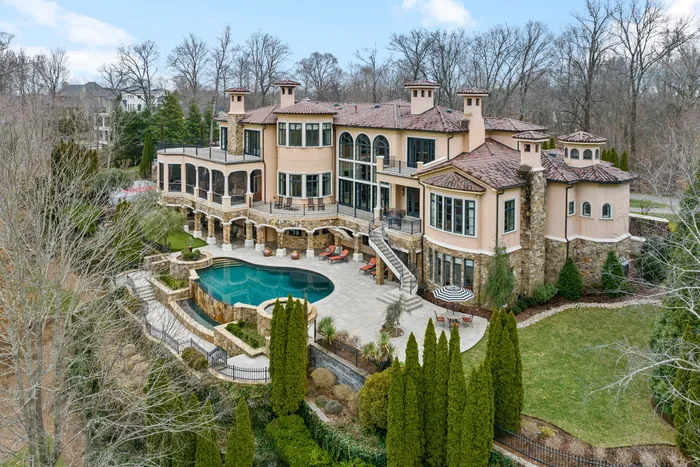The 30 Best Places to Live in Kentucky: Bluegrass State’s Top Communities

Kentucky offers residents a unique combination of natural beauty, affordable living costs, and strong community connections across its diverse cities and towns. From the rolling bluegrass hills to historic downtown districts, the state provides options for various lifestyles and preferences.
Choosing the right place to live in Kentucky depends on factors such as career opportunities, school quality, cost of living, and recreational amenities.
The state features everything from major metropolitan areas like Louisville and Lexington to charming smaller communities such as Berea and Fort Thomas.
Each location brings distinct advantages, whether it’s access to bourbon country attractions, proximity to outdoor recreation, or vibrant cultural scenes.
Kentucky’s communities generally maintain reasonable housing costs compared to national averages while offering quality amenities and services.
Here are the 30 best places to live in Kentucky:
30. Shelbyville
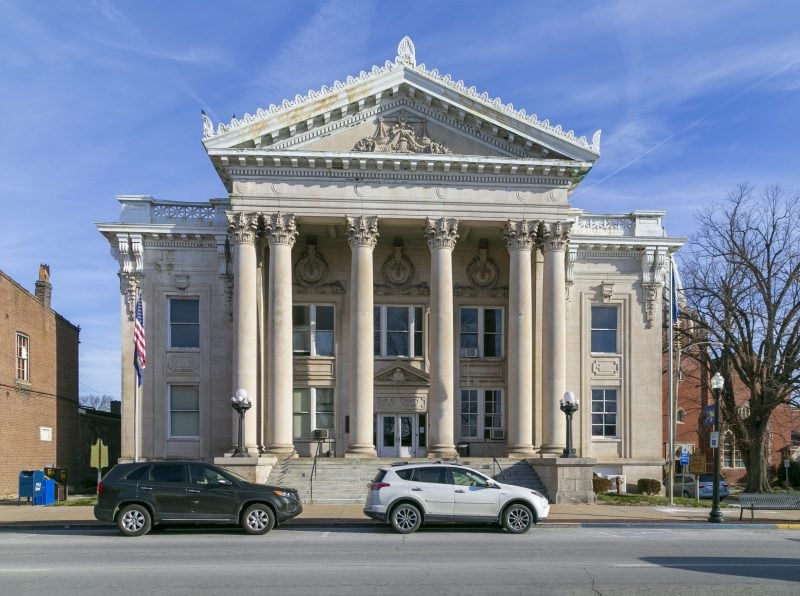
Shelbyville ranks as the 6th best city to live in Kentucky. This small city sits about 30 miles east of Louisville, offering residents small-town charm with access to big-city amenities.
The city serves as the county seat of Shelby County with a population of approximately 16,244 residents. Shelbyville maintains a strategic location between Louisville and Lexington, making it convenient for commuters.
The poverty rate stands at 10.7%, which is 24% lower than the national average. Typical households earn $65,986 annually, slightly below the national median of $67,500.
Historic sites like Oldana Church & Cemetery add character to the community. Local equestrian trails provide outdoor recreation opportunities for horseback riding and camping.
The area features various unique eateries throughout the city. Shelbyville combines rural charm with growing suburban elements, creating a distinctive living environment for residents seeking both tranquility and accessibility.
29. Hopkinsville
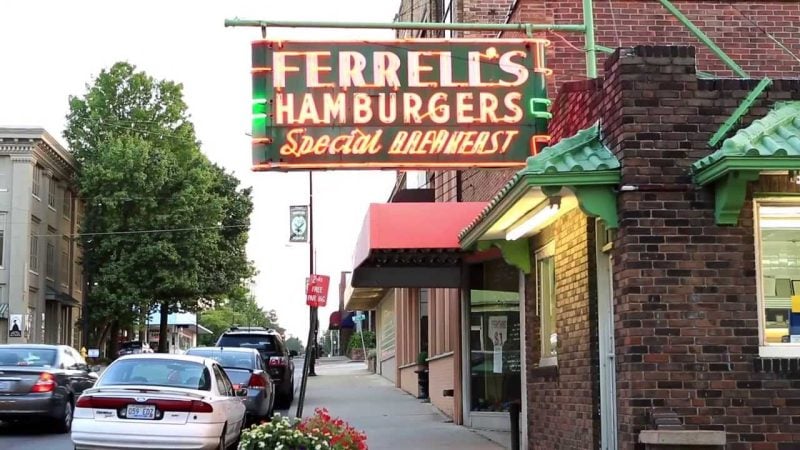
Hopkinsville sits in Christian County with a population of approximately 31,000 residents. The city combines small-town charm with rural living while providing adequate amenities for daily needs.
Known locally as “Hoptown,” this community offers residents a sparse suburban atmosphere. Most residents own their homes rather than rent.
The city attracts many families seeking affordable living options in Kentucky. Public schools in Hopkinsville perform above average compared to state standards.
Housing costs remain reasonable throughout the area, though neighborhood quality varies significantly across different parts of the city. The best neighborhoods typically feature higher home values and lower crime rates.
Hopkinsville provides a mix of urban and rural living experiences. The city offers various parks and recreational activities for residents of all ages.
The community maintains moderate political views and welcomes cultural diversity. Residents enjoy access to local amenities while benefiting from the slower pace of smaller city life.
28. Paducah
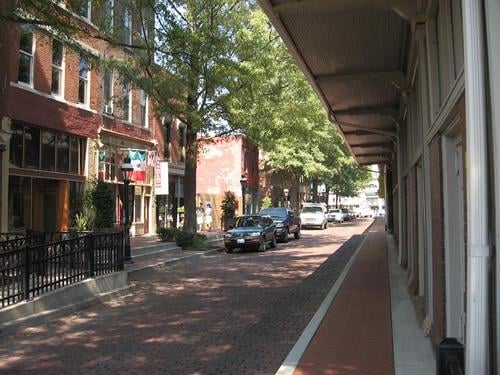
Paducah serves as a regional hub in western Kentucky along the Ohio River. The city offers affordable housing with a median home price of $109,700. Home appreciation has increased 5.8% over the past year.
The city ranks 35th out of 174 places for public schools in Kentucky. Paducah also places 36th of 237 for diversity among Kentucky communities.
Residents benefit from lower crime rates in many neighborhoods. The quality of neighborhoods varies significantly throughout the city based on home values and amenities.
Paducah provides access to the Ohio River and serves as a transportation crossroads. The city offers small-town living with regional amenities and services.
Employment opportunities exist in healthcare, manufacturing, and river commerce. The cost of living remains below national averages across most categories.
27. Murray
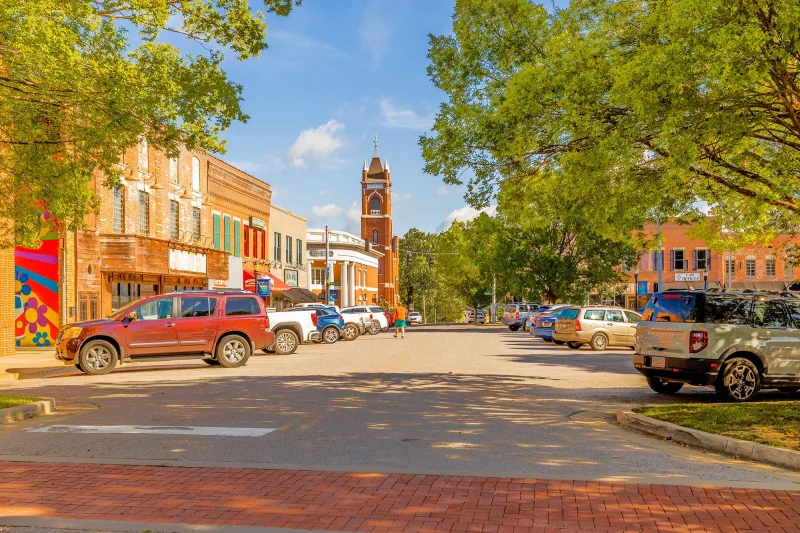
Murray stands out as a college town anchored by Murray State University. The city balances rural charm with academic energy across its population of approximately 18,000 residents.
Housing remains notably affordable compared to larger Kentucky cities. This makes Murray attractive for young professionals and families seeking reasonable living costs.
The university brings cultural vibrancy and educational opportunities to the community. Students and faculty contribute to a diverse population mix that enhances local amenities.
Murray ranks among Kentucky’s top places for public schools. The education system serves both local families and university-connected residents well.
Outdoor recreation options include Central Park and Rotary Park. The annual Calloway County Fair draws visitors each August with traditional festivities.
The city offers a dense suburban feel in Calloway County. Most residents rent rather than own their homes, reflecting the strong student population influence.
26. Ashland
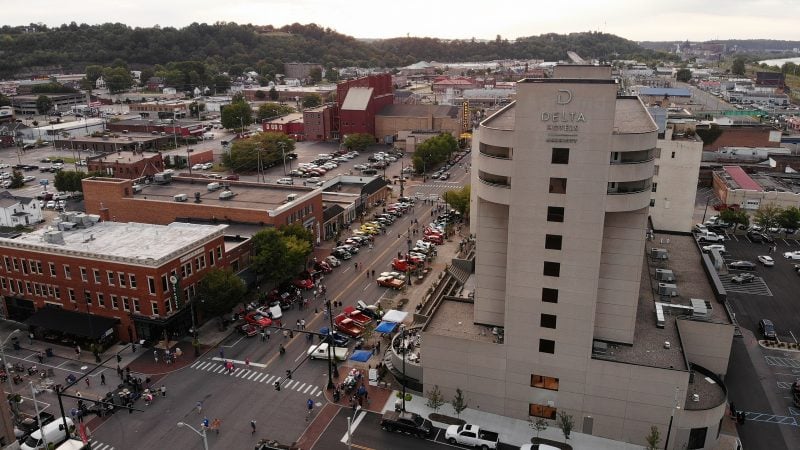
Ashland ranks as the 10th best place to live in Kentucky out of 1,542 locations statewide. This northeastern Kentucky city offers residents affordable living costs that attracted national recognition.
The Ashland metro area earned recognition as the third best affordable place to live in the United States. Housing prices remain significantly below national averages while maintaining quality neighborhoods.
The city serves a population of approximately 21,000 residents along the Ohio River. Ashland provides access to employment opportunities in both Kentucky and neighboring West Virginia.
Neighborhoods vary considerably in quality and home values throughout the city. The best areas typically feature lower crime rates and higher property values.
Residents benefit from the city’s strategic location near Huntington, West Virginia. This proximity expands job markets and recreational opportunities for Ashland families.
The poverty rate stands at 21.2%, which exceeds national figures. Median household income reaches $42,639 annually.
25. Russell
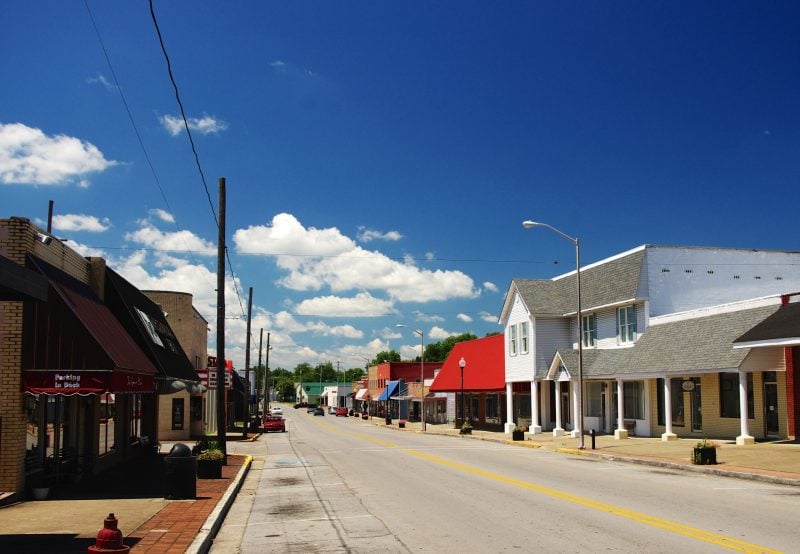
Russell sits along the Ohio River in Greenup County with a population of around 3,000 residents. This small town combines suburban comfort with rural charm while maintaining proximity to larger cities like Ashland.
The community earns high marks for affordability and safety. Russell receives an A+ rating for cost of living and an A rating for crime rates, making it attractive for families and retirees.
Russell ranks #78 among Kentucky cities with a livability score of 76/100. The town performs better than 90% of all US cities in overall quality of life metrics.
Local schools receive excellent ratings, contributing to the town’s family-friendly reputation. However, entertainment options and amenities remain limited compared to nearby urban areas.
Housing costs stay well below state and national averages. The small-town atmosphere appeals to those seeking a quieter lifestyle while still having access to larger metropolitan areas within driving distance.
24. Danville
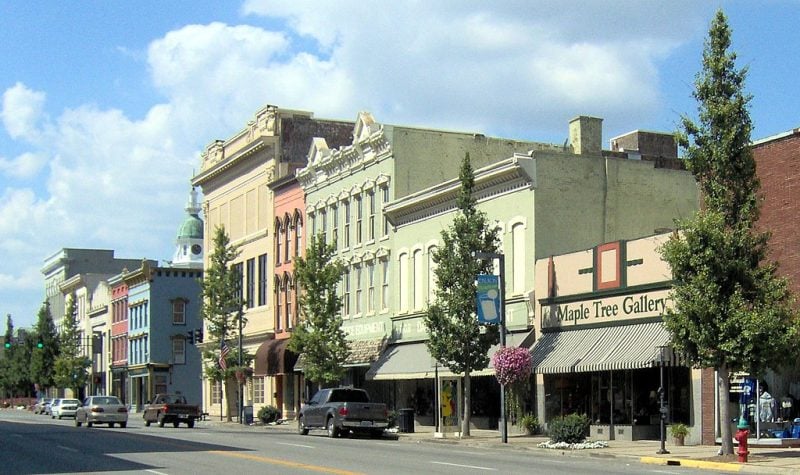
Danville sits in Kentucky’s Bluegrass region with a population of approximately 17,000 residents. The city serves as the county seat of Boyle County and houses the prestigious Centre College.
The historic downtown area attracts residents with its charm and community events. Constitution Square State Historic Site marks where Kentucky’s constitution was established in 1792.
Housing costs remain affordable compared to larger Kentucky cities. Most residents own their homes, creating a stable suburban community feel.
The city attracts young professionals and retirees seeking small-town living. Crime rates stay relatively low while schools maintain good reputations.
Danville offers cultural amenities despite its modest size. The poverty rate sits at 18.6%, with median household income around $42,000 annually.
The community leans conservative politically and emphasizes traditional values. Residents enjoy access to both rural landscapes and urban conveniences within reasonable driving distance.
23. Madisonville

Madisonville offers residents affordable housing options compared to Kentucky’s state average. Home prices remain below $164,895, making it accessible for many buyers.
The city ranks highly for livability according to multiple housing surveys. Its metro area has received recognition as one of the better places to live in the United States.
Madisonville provides a balance of cost-effectiveness and quality of life. The community offers reasonable living expenses while maintaining good local amenities.
The city attracts families and individuals seeking affordable housing in western Kentucky. Its location provides access to regional opportunities while maintaining small-city charm.
Local neighborhoods vary in character and home values. The housing market reflects strong demand in the most desirable residential areas throughout the city.
22. Somerset
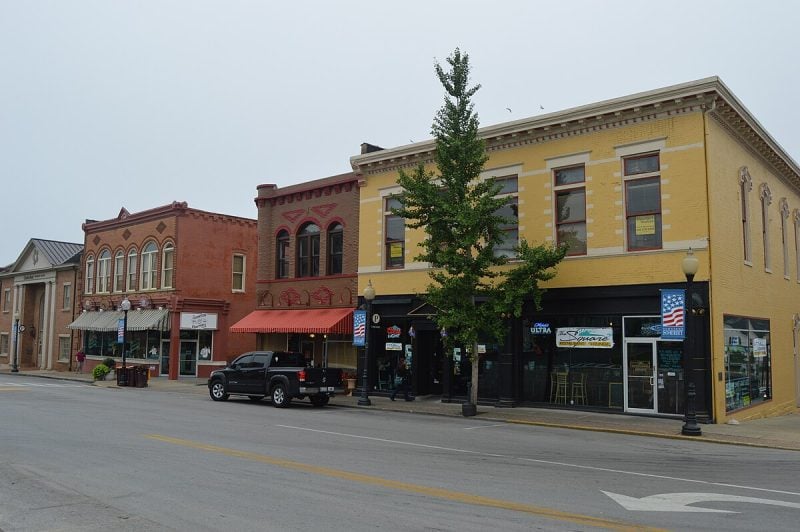
Somerset sits in south-central Kentucky with a population of around 12,000 residents. The city serves as the county seat of Pulaski County and offers a sparse suburban atmosphere.
Most residents rent their homes rather than own them. The community attracts many families and retirees who appreciate the quieter pace of life.
Somerset’s public schools receive high ratings from residents. The typical household earns approximately $27,739 annually, which falls below the national median income.
The area features natural attractions including Pulaski State Forest and cave systems. Residents can explore art galleries, museums, and historical sites like the Civil War Battle of Mill Springs Museum.
The city has limited public transportation options. Entertainment choices are fewer compared to larger metropolitan areas, though the natural setting provides outdoor recreation opportunities.
Housing costs vary significantly across different neighborhoods within Somerset. The poverty rate stands at 30.7%, which exceeds the national average.
21. Berea

Berea stands out as one of Kentucky’s most appealing small towns with a population of approximately 15,557 residents. Located in Madison County, this community offers a sparse suburban atmosphere where most residents own their homes.
The town attracts both families and young professionals seeking an authentic Kentucky experience. Berea provides residents with a lower cost of living compared to many other areas in the state.
Home values in Berea reflect strong market demand, with certain neighborhoods commanding premium prices. The typical household earns around $44,357 annually, though this falls below the national median income.
Berea has gained recognition as an excellent retirement destination where residents can maintain comfortable lifestyles on modest budgets. The town combines small-town charm with reasonable housing costs and a generally safe environment.
Residents should expect typical small-town limitations including fewer dining and entertainment options than larger cities offer.
20. Crestview Hills
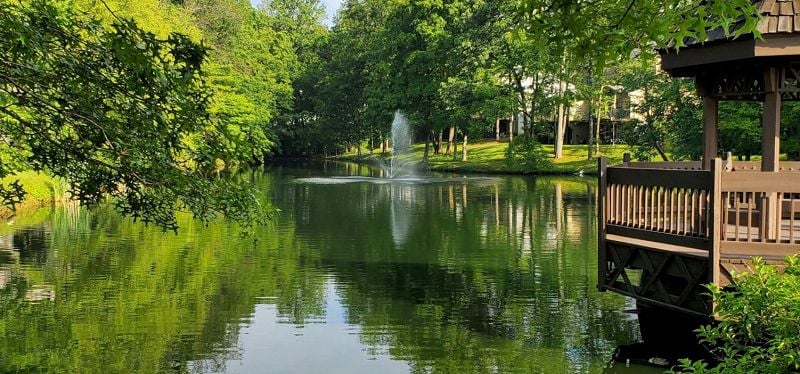
Crestview Hills stands out as one of Kentucky’s premier suburban communities. This small city of approximately 3,200 residents offers an ideal blend of peaceful living and urban convenience.
Located in Kenton County near Cincinnati, residents enjoy easy access to metropolitan amenities while maintaining a quiet neighborhood atmosphere. The community centers around Thomas More University and Crestview Hills Town Center.
The city features five distinct residential areas including Old Crestview, Lookout Farms, and College Park. Most residents own their homes in this dense suburban setting with abundant restaurants and parks nearby.
Home prices exceed Kentucky’s state average, reflecting the area’s desirability and quality of life. The community successfully balances growth with its small-town character.
Crestview Hills provides residents with natural beauty through green spaces and walking trails. Safety, convenience, and proximity to Cincinnati make it particularly attractive for families seeking suburban living.
19. Newport

Newport sits strategically along the Ohio River, directly across from Cincinnati. This Campbell County city offers residents an urban-suburban blend with convenient access to major metropolitan amenities.
The community of approximately 14,000 people creates a walkable environment filled with bars, restaurants, and coffee shops. Most residents choose to rent rather than purchase homes in this diverse market.
Newport recently earned recognition as one of America’s best historic small towns. The city features notable attractions including the Newport Aquarium and Newport on the Levee entertainment district.
Housing costs remain affordable compared to nearby Cincinnati. The poverty rate stands at 26.4%, with median household income around $39,335 annually.
Newport ranks #37 among Kentucky cities for livability, earning a score of 83 out of 100. The location provides easy access to Northern Kentucky’s growing technology, manufacturing, and healthcare sectors.
18. Florence
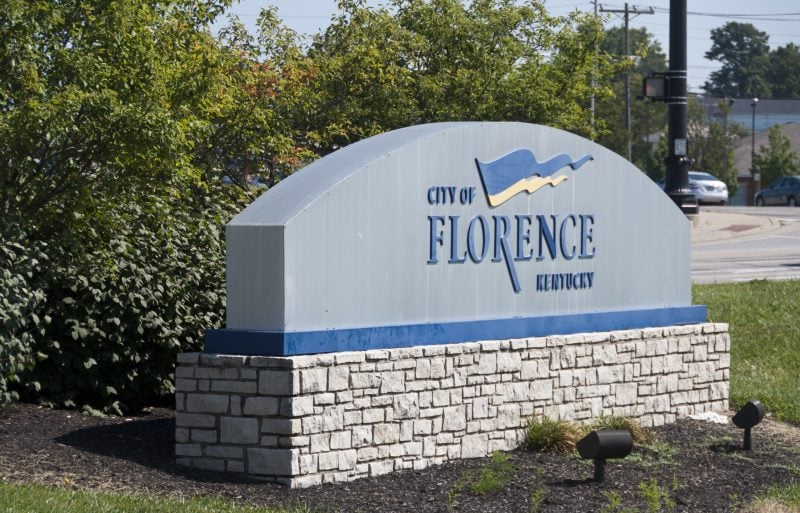
Florence sits in northern Kentucky, positioned northeast of Cincinnati. The city welcomes visitors with its distinctive red-and-white checkerboard water tower displaying “Florence Y’all” along Interstate 75.
The community features strong economic sectors including advanced manufacturing, healthcare, and retail. Gateway Community & Technical College maintains a campus here, contributing to the area’s educational resources.
Florence offers various recreational amenities. Residents can access golf courses like Waterside Golf Course and Boone Links Country Club. The city also provides entertainment centers and shopping options including nearby malls.
Neighborhoods in Florence vary significantly in quality and median home values. The housing market shows considerable disparity across different areas of the city.
The location provides convenient access to Cincinnati while maintaining its own community identity. Florence attracts families seeking a balance between suburban living and proximity to urban amenities.
17. Cold Spring
Cold Spring is a suburb of Cincinnati located in Campbell County with a population of 6,298. The city was officially incorporated in March 1941 but has roots dating back to the 1780s.
This community offers residents a dense suburban feel where most people own their homes. The area attracts many retirees and families seeking a quiet neighborhood environment.
Cold Spring ranks among the best places to live in Kentucky due to its safe streets and friendly community atmosphere. The city provides low cost of living compared to many other areas.
Home prices in Cold Spring exceed Kentucky’s state average of $164,895, reflecting the desirability of the area. The community offers good public schools and maintains its reputation as a family-friendly suburb.
Residents enjoy beautiful natural surroundings and easy access to Cincinnati amenities while living in a smaller community setting.
16. Villa Hills
Villa Hills stands as a prestigious suburb of Cincinnati located in Northern Kentucky’s Kenton County. The city serves approximately 7,378 residents who enjoy a rural atmosphere while maintaining proximity to urban amenities.
Home values in Villa Hills exceed Kentucky’s state average of $164,895. The typical household earns $91,166 annually, significantly above the national median of $67,500.
The community maintains a low poverty rate of 4.3%, which is 69% lower than the national average. Most residents own their homes, contributing to neighborhood stability and investment in the area.
Villa Hills attracts families seeking quality education and outdoor activities. Approximately 40% of households include children under 18, creating a family-oriented environment with numerous parks and recreational opportunities.
The city features rolling hills, winding creeks, and scenic river views that provide natural beauty. Residents have access to various restaurants and parks throughout the community.
15. Union
Union ranks as one of Kentucky’s top suburban communities for families and homebuyers. The city holds the third position among the best suburbs to purchase a house in Kentucky.
This small community of approximately 5,988 residents maintains a strong economic foundation. The typical household earns $123,630 annually, significantly above the national median of $67,500.
Union demonstrates remarkable economic stability with a poverty rate of just 0.8%. This figure sits 94% lower than the national average, indicating widespread financial security among residents.
The city receives high marks for overall livability, earning a score of 68 out of 100. This rating places Union in the top 50% of cities nationwide for quality of life.
Home values in Union exceed Kentucky’s state average of $164,895. The higher property values reflect the area’s desirability and strong market demand from potential residents seeking quality suburban living.
14. Indian Hills
Indian Hills stands as one of Kentucky’s most prestigious suburbs, located in eastern Jefferson County near Louisville. This affluent community spans approximately 2.7 square miles and houses around 2,870 residents.
The city ranks 4th among Kentucky’s best places to retire and 11th for best suburbs statewide. With a median household income of $190,313, it attracts high-earning professionals seeking upscale living.
Nearly 100% of residents own their homes, with median values around $609,100. Tree-lined streets and upscale properties define the neighborhood’s character.
Indian Hills offers a rural feel despite its proximity to Louisville’s urban amenities. Residents enjoy access to restaurants, coffee shops, and parks throughout the area.
The community’s location near the Ohio River provides tranquility while maintaining convenient access to Louisville’s resources and attractions.
13. Anchorage
Anchorage stands out as one of Kentucky’s premier residential communities. This small suburb of Louisville has a population of approximately 2,400 to 2,700 residents.
The city consistently ranks among the best places to live in both Louisville and Kentucky. Residents enjoy a rural atmosphere while maintaining proximity to urban amenities.
Most residents own their homes in this affluent community. The area originally served as a summer retreat for wealthy Louisville families and maintains its upscale character today.
Anchorage offers excellent schools and strong community connections. Families find the area particularly appealing for raising children.
The community provides abundant outdoor recreation opportunities. Residents can access hiking trails, parks, kayaking, and fishing facilities throughout the area.
Home prices in Anchorage exceed Kentucky’s state average significantly. The higher cost reflects the desirable location and quality of life the community offers.
12. Henderson
Henderson sits along the Ohio River in western Kentucky, offering residents a charming small-city atmosphere. The city has earned recognition for its favorable weather patterns and mild temperatures throughout the year.
Housing costs remain reasonable compared to larger Kentucky cities. The median home values vary significantly across different neighborhoods, providing options for various budgets.
Henderson receives a livability score of 73 out of 100, ranking it 102nd among Kentucky cities. Crime rates tend to be lower in the more desirable residential areas.
The city’s historic downtown area features local shops and restaurants. Residents enjoy access to the riverfront and several parks for outdoor activities.
Public schools serve the community adequately, though quality varies by district. The job market centers around manufacturing and healthcare sectors, providing steady employment opportunities for locals.
11. Owensboro
Owensboro sits along the Ohio River in northwestern Kentucky, about 100 miles west of Louisville. This small river town serves as the seat of Daviess County and offers residents a sparse suburban atmosphere.
The city has a population of approximately 60,000 people with a median household income around $61,761. Most residents own their homes, with a homeownership rate of 64% and median property values at $185,242.
Owensboro is nationally recognized for its barbecue scene, particularly mutton barbecue. National Geographic and Bustle have highlighted the city as one of America’s best barbecue destinations.
The public schools in Owensboro perform above average. The cost of living runs about 20% lower than national averages, making it an affordable option for families and young professionals.
The city maintains a friendly atmosphere with rich cultural heritage rooted in its river town history.
10. Richmond
Richmond ranks as one of Kentucky’s top cities for quality of life. The city attracts residents with its blend of educational opportunities and community amenities.
Home to Eastern Kentucky University, Richmond maintains a vibrant college town atmosphere. The university brings cultural events and economic stability to the area.
Housing costs in Richmond exceed the state average of $164,895. The market reflects strong demand in desirable neighborhoods throughout the city.
Richmond has a population of approximately 35,744 residents. The median household income is $39,329, which is below the national average.
The city offers access to outdoor recreation and maintains a central location in Kentucky. Richmond provides residents with small-town charm while offering urban conveniences.
Students and families find Richmond appealing due to its educational resources and community engagement opportunities.
9. Georgetown
Georgetown ranks 32nd among the top 100 best places to live and raise a family in the United States. The city sits just 10 miles north of Lexington in Kentucky’s renowned horse country.
This small town maintains strong equestrian ties while offering residents a high quality of life. Georgetown features a charming Victorian downtown area and numerous historical attractions.
The local economy remains robust with low unemployment rates. Housing costs stay affordable compared to many other desirable locations across the country.
Residents enjoy access to horse-related events throughout the year. The Kentucky Horse Park and local riding stables provide recreational opportunities for equestrian enthusiasts.
Georgetown’s central Kentucky location offers convenient access to both urban amenities and rural landscapes. The community successfully balances small-town charm with modern conveniences and economic stability.
8. Elizabethtown
Elizabethtown sits 45 miles south of Louisville in west-central Kentucky. The city combines urban amenities with rural charm, offering both suburban neighborhoods and countryside settings.
Home values in Elizabethtown average $221,836, significantly lower than the national median. This affordability attracts many residents seeking quality housing options.
The city serves military families well due to its proximity to Fort Knox, just 12 miles north. Many service members choose to live in this friendly community.
Elizabethtown ranks as the second-best place to live in Kentucky according to recent studies. The poverty rate stands at 13.4%, which is below the national average.
Residents enjoy access to shopping centers, restaurants, and modern conveniences. The surrounding area features rolling hills and farms that provide seasonal produce.
The median household income reaches $47,270 annually. Educational opportunities and diverse neighborhoods make it attractive for families and retirees alike.
7. Bowling Green
Bowling Green stands as Kentucky’s third most populous city with 73,638 residents. The city earned recognition from Time.com as the “Best Place to Live in Kentucky.”
Home to Western Kentucky University, Bowling Green offers a dense suburban atmosphere. Most residents rent their homes, and the city attracts many young professionals.
The city provides 208 clear days annually for outdoor activities. Residents enjoy numerous parks and recreational opportunities throughout the area.
Housing costs remain below the national average despite being higher than Kentucky’s state average of $164,895. The affordable housing market makes homeownership accessible for many families.
Bowling Green serves as the “Home of the Corvette” and maintains a bustling local economy. The city combines modern attractions with rich cultural heritage.
Public schools receive high ratings throughout the district. Popular neighborhoods include Downtown, Hartland, Stonehenge, and Plum Springs, each offering distinct characteristics and housing options.
6. Frankfort
Frankfort serves as Kentucky’s capital city and home to approximately 28,000 residents. The city sits along the Kentucky River in central Kentucky, offering a blend of small-town charm and government-centered activity.
As the state capital, Frankfort has been central to Kentucky’s political and cultural life since the late 18th century. The city provides residents with cultural attractions and recreational events throughout the year.
Housing quality varies significantly across different neighborhoods in Frankfort. The best areas are typically determined by median home values and market demand from prospective residents.
Frankfort offers a unique living experience that differs from larger nearby cities like Lexington. The city combines historical significance with natural beauty along the Kentucky River.
Residents benefit from the city’s government employment opportunities and established infrastructure. The community maintains a balance between urban amenities and accessible outdoor recreation options.
5. Edgewood
Edgewood stands out as one of Kentucky’s premier residential communities. This Northern Kentucky suburb ranks 4th out of 89 for best suburbs to live in across the state.
The city offers residents a compelling financial advantage. The typical household earns $89,073 annually, nearly double Kentucky’s median income of $44,811.
Located in Kenton County with 8,429 residents, Edgewood provides easy access to Cincinnati. The community maintains a sparse suburban atmosphere where most residents own their homes.
Edgewood receives high marks for livability. The city earned a livability score of 87 out of 100 based on factors including commute times, safety, education, and housing quality.
The area features numerous parks and recreational opportunities. Edgewood attracts many retirees and families seeking a balance between small-town charm and urban convenience.
Housing quality varies significantly throughout different neighborhoods within the city.
4. Bellevue
Bellevue stands out as one of Kentucky’s most livable communities. This Campbell County city of approximately 5,600 residents offers a unique combination of affordability and quality living.
The city ranks as the best place in Kentucky to live on a $100,000 annual salary. Home prices exceed the state average of $164,895, reflecting the area’s desirability and strong market demand.
Bellevue provides residents with a sparse suburban atmosphere where most people own their homes. The community features numerous bars, restaurants, coffee shops, and parks that enhance daily life.
Located along the riverfront, Bellevue offers beautiful water views and distinctive historic architecture. The poverty rate sits at 10.6%, which is 24% lower than the national average.
The typical household earns $68,819 annually, slightly above the national median. This income level combined with the city’s amenities creates an attractive living environment for families and professionals.
3. Louisville
Louisville stands as Kentucky’s largest city and economic hub. The city offers diverse neighborhoods ranging from historic Old Louisville with Victorian architecture to the trendy NuLu district.
Housing costs remain reasonable compared to other major cities. The job market shows strength across multiple industries including healthcare, manufacturing, and logistics.
Educational opportunities include the University of Louisville and several quality public school districts. The city ranks favorably for overall livability when considering employment, healthcare access, and cultural amenities.
Transportation options include public bus systems and proximity to major highways. The Louisville VA Medical Center serves as a significant employer in the region.
Crime rates vary significantly between neighborhoods. Residents benefit from numerous parks, restaurants, and entertainment venues throughout the metropolitan area.
The city combines urban amenities with Southern hospitality, attracting both young professionals and families seeking affordable living options.
2. Lexington
Lexington stands as Kentucky’s second-largest city and ranks among the top places to live nationwide. The city earned recognition as the 15th best place to live in the United States according to recent rankings.
Known for its equestrian heritage and bourbon culture, Lexington offers residents a unique blend of southern hospitality and urban amenities. The city features a vibrant downtown district with diverse cultural offerings and ample outdoor recreation opportunities.
Housing remains affordable compared to similar-sized cities, with median home prices around $370,000. This makes Lexington attractive for families and professionals seeking quality of life without excessive costs.
The city boasts consistent job growth and high education levels among residents. Crime rates remain relatively low while public schools receive positive ratings from families.
Popular neighborhoods include Georgetown, Beaumont, and Downtown Lexington, each offering distinct characteristics for different lifestyle preferences.
1. Fort Thomas
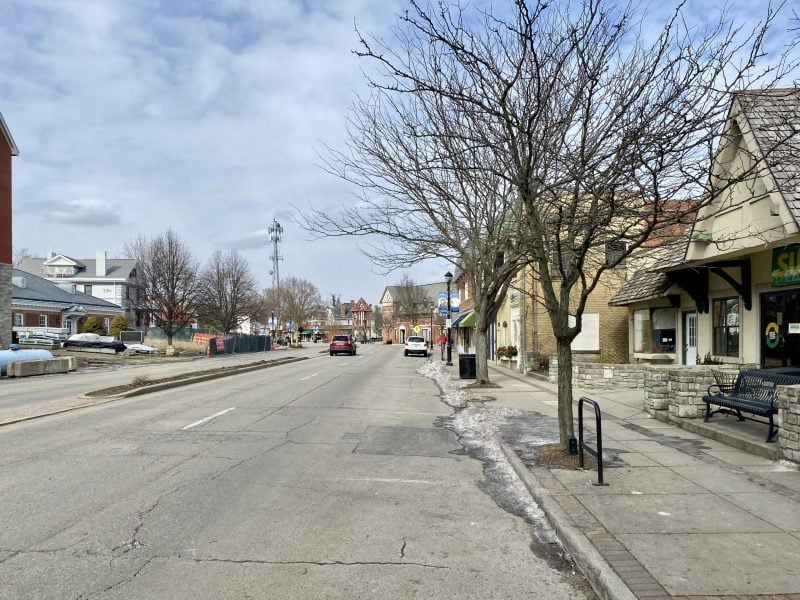
Fort Thomas stands as Kentucky’s premier residential community with a population of 17,242. Located in Campbell County along the Ohio River, this Cincinnati suburb consistently ranks as the state’s best place to live.
The city offers residents a sparse suburban atmosphere where most people own their homes. Home ownership rates reach 71.3% with a median home price of $282,900.
Fort Thomas provides abundant amenities including numerous bars, restaurants, coffee shops, and parks. Its proximity to Cincinnati gives residents access to urban conveniences while maintaining small-town charm.
The cost of living runs 15% higher than Kentucky’s average but remains 3% below national standards. Housing costs drive this difference, with real estate prices 29% above the state average.
Fort Thomas ranks 11th statewide for diversity with a score of 73 out of 100. The community maintains low unemployment at 4.4% with positive job growth trends.
Key Factors That Make a Great Place to Live
Housing affordability directly impacts monthly budgets and long-term financial stability. Educational quality affects children’s futures and property values in communities.
Affordable Housing Opportunities
Housing costs should consume no more than 30% of household income for financial stability. Kentucky’s median home price remains significantly lower than the national average, making homeownership accessible to middle-income families.
Rental markets in smaller Kentucky cities often provide better value than urban centers. Cities like Bowling Green and Richmond offer diverse housing options from historic homes to modern developments.
Key housing affordability indicators include:
Median home price to income ratios
Property tax rates
Rental vacancy rates
New construction activity
Down payment assistance programs exist in many Kentucky communities. First-time homebuyer incentives help residents transition from renting to ownership.
Housing inventory levels affect pricing and buyer competition. Markets with balanced supply and demand create stable pricing conditions for both buyers and sellers.
Quality of Education Systems
School district performance directly influences family relocation decisions. Kentucky’s public school system uses standardized testing and accountability measures to evaluate educational quality.
Primary education factors include:
Student-to-teacher ratios
Graduation rates
Advanced placement course availability
Special education services
Higher education access expands career opportunities for residents. Universities like the University of Kentucky and Western Kentucky University provide research facilities and skilled workforce development.
Private school options complement public education systems. Parochial and independent schools offer alternative educational approaches for families seeking specialized learning environments.
School funding formulas in Kentucky aim to equalize resources across districts. Per-pupil spending varies by district but state funding helps balance disparities between wealthy and less affluent areas.
Community Safety and Well-Being
Crime statistics provide measurable safety indicators for potential residents. Violent crime rates and property crime data help families assess neighborhood security levels.
Emergency response times affect outcomes during medical crises and accidents. Fire departments, police departments, and emergency medical services require adequate staffing and equipment.
Safety metrics to evaluate include:
Violent crime rates per 100,000 residents
Property crime statistics
Police response times
Fire department ratings
Community engagement strengthens social connections and neighborhood watch programs. Active civic organizations and volunteer groups contribute to safer, more connected communities.
Traffic safety infrastructure protects pedestrians and drivers. Well-maintained roads, proper signage, and traffic enforcement reduce accident rates in residential areas.
Access to Healthcare Services
Hospital proximity affects emergency care access and routine medical needs. Kentucky residents benefit from regional medical centers that serve multiple counties.
Specialist availability determines treatment options for complex medical conditions. Larger cities typically offer more specialized medical services than rural communities.
Healthcare access considerations:
Distance to nearest hospital
Specialist physician availability
Mental health services
Preventive care options
Insurance network coverage varies by location and affects out-of-pocket medical costs. Residents should verify their insurance providers maintain networks in their chosen communities.
Telemedicine services expand healthcare access in rural areas. Digital health platforms connect patients with specialists who may practice hundreds of miles away.
Public health departments provide community wellness programs and disease prevention services. These agencies offer vaccinations, health screenings, and educational resources to residents.
Lifestyle and Community Advantages
Kentucky residents enjoy diverse outdoor activities across scenic landscapes while participating in rich cultural traditions spanning music, bourbon, and equestrian sports. The state’s growing economy creates opportunities in manufacturing, healthcare, and technology sectors.
Outdoor Recreation and Natural Beauty
Kentucky’s landscape offers extensive opportunities for outdoor enthusiasts. Mammoth Cave National Park provides underground exploration through the world’s longest known cave system. Red River Gorge attracts rock climbers and hikers with its sandstone cliffs and natural arches.
The state features over 90,000 miles of streams and rivers for fishing and boating. Kentucky Lake and Lake Cumberland rank among the top recreational water destinations in the Southeast. Daniel Boone National Forest covers 708,000 acres across eastern Kentucky.
Popular outdoor activities include:
Hiking and camping in state parks
Whitewater rafting on the Russell Fork River
Bass fishing tournaments
Mountain biking trails
Wildlife watching and bird hunting
The rolling bluegrass hills provide scenic backdrops for daily life. Many communities maintain walking trails and greenway systems connecting neighborhoods to natural areas.
Cultural Attractions and Local Events
Kentucky’s cultural scene centers around bourbon distilleries, horse racing, and bluegrass music. The Kentucky Bourbon Trail features over 40 distilleries offering tours and tastings. Churchill Downs hosts the Kentucky Derby annually, drawing 150,000 spectators.
Major cultural attractions include:
Kentucky Horse Park in Lexington
Louisville Slugger Museum
National Corvette Museum in Bowling Green
Keeneland Race Course
Multiple bourbon distilleries
Bluegrass music festivals occur throughout the year across different regions. The International Bluegrass Music Museum preserves the genre’s history. Local communities host county fairs, barbecue competitions, and craft festivals regularly.
Louisville’s theater district and arts scene provide urban cultural experiences. Smaller cities maintain historic downtown areas with local shops, restaurants, and entertainment venues.
Economic Growth and Employment Trends
Kentucky’s economy shows steady growth in manufacturing, healthcare, and logistics sectors. The state ranks among the top auto-producing states with Toyota, Ford, and General Motors facilities. Amazon operates multiple fulfillment centers creating thousands of jobs.
Key employment sectors:
Advanced manufacturing (automotive, aerospace)
Healthcare and medical services
Logistics and distribution
Agriculture and food processing
Tourism and hospitality
The unemployment rate remains below national averages in major metropolitan areas. Louisville and Lexington anchor the state’s economy with diverse job markets. Northern Kentucky benefits from proximity to Cincinnati’s business district.
Median household incomes by region:
Louisville Metro: $54,000
Lexington-Fayette: $52,000
Northern Kentucky: $58,000
The cost of living stays 8-12% below national averages while wages remain competitive in skilled sectors.

